#jonathan latimer
Explore tagged Tumblr posts
Text
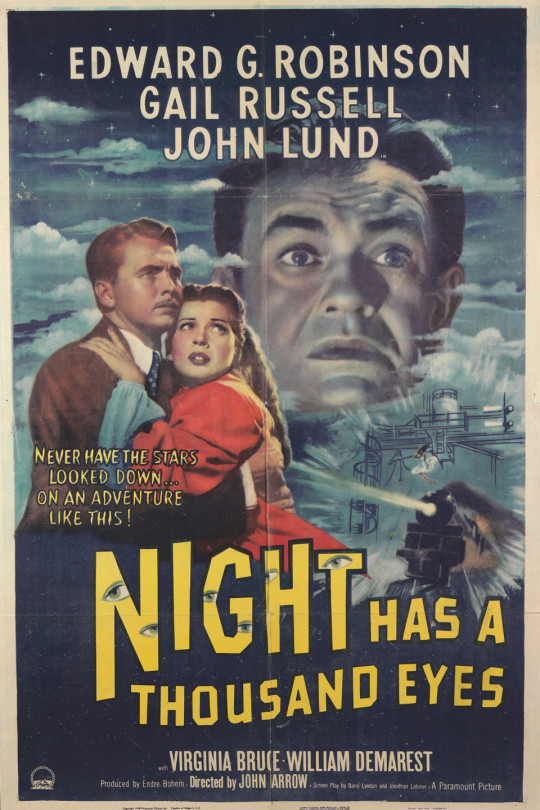

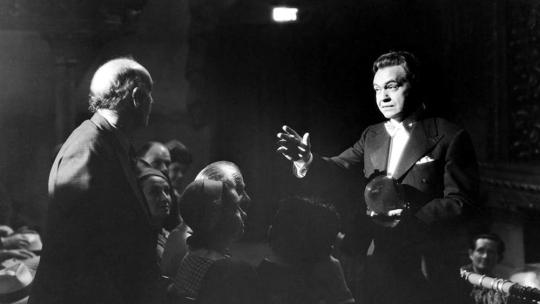
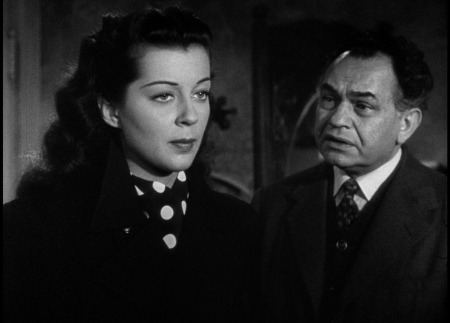
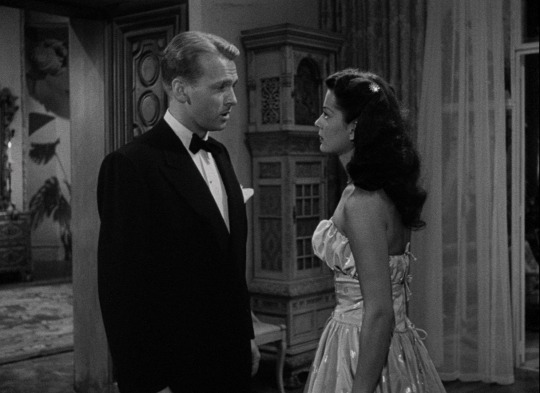

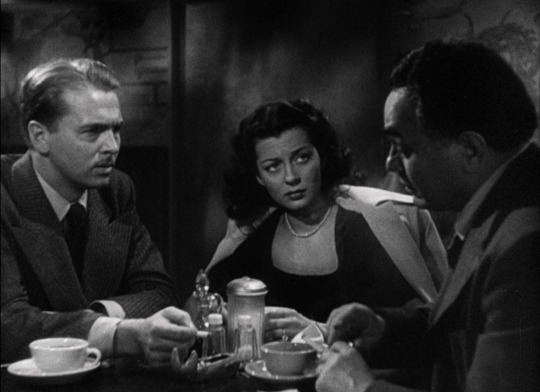
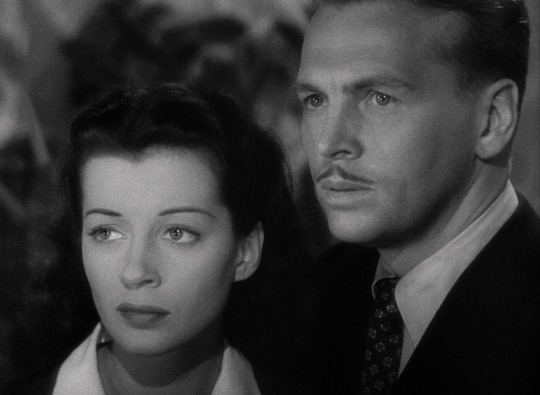


Night Has a Thousand Eyes (1948)
"Why was this gift given to me? And why was this other power withheld - this power to turn evil into good?"
#night has a thousand eyes#1948#american cinema#john farrow#barré lyndon#cornell woolrich#jonathan latimer#edward g. robinson#gail russell#john lund#virginia bruce#william demarest#richard webb#jerome cowan#onslow stevens#john alexander#roman bohnen#luis van rooten#mary adams#douglas spencer#victor young#variously described as film noir or even a horror film‚ depending on what you read‚ but either is a hell of a stretch for this minor#mystery melodrama. Robinson is a mild mannered mesmerist charlatan who one day discovers he has a knack for real fortune telling; albeit#only tragic stuff. his life turns to a shambles and he buries himself in obscurity to avoid the pain of foreseeing terrible events he#cannot prevent. all this is told in flashback after an impressively disorientating opening in which a distraught Russell tries to kill#herself at a moonlit train station; ol' Eddie has had a vision of her death‚ you see. what follows is a slightly stodgy drama of people not#believing EGR is anything but a conman despite his unerring ability to foretell the terrible; he meanwhile sets out to try and save the#young woman he's apparently doomed. there's a love interest for Russell too but he's pretty bland; this is at its best with Robinson's#crumpled psychic‚ his sad fall from grace the result of an extraordinary gift he never wished for. hokum but not a bad time for all that
4 notes
·
View notes
Text
'The Big Clock' – the web closes in on Criterion Channel
The Big Clock (1948) has one of the most deliciously noir twists in a genre known for its ruthless characters, cold-blooded betrayals, and twisted plots. Ray Milland stars as George Stroud, a family man and editor of a crime magazine who goes out for a night on the town after he’s fired and picks up a drinking partner in Pauline York (Rita Johnson). She just happens to be the vindictive mistress…
#1948#Blu-ray#Charles Laughton#Criterion Channel#DVD#George Macready#John Farrow#Jonathan Latimer#Kenneth Fearing#Maureen O&039;Sullivan#Ray Milland#Rita Johnson#The Big Clock#VOD
0 notes
Text
Previous National BTF Winners (Pre-TDA)
JUMP National VIPS
Jeanine Mason (unknown year)
Miranda Maleski (unknown year) - ALDC
Kayla Radomski (unknown year) - Michelle Latimer SOD
Lindsay Leuschner (unknown year)
Melissa Mitro (unknown year)
Brandon Bryant (2007 Teen Male) - Dance Empire
Ade Obayomi (2007 Senior Male)
Elizabeth Macy (2007 Senior Female)
Adrian Lee (2008 Senior Male)
Kaitlyn Conley (2008 Senior Female)
Payton Johnson (2009 Mini Female)
Alexa Anderson (2009 Senior Female)
Jayci Kalb (2010 Junior Female) - The Dance Centre
Kellie Drobnick (2010 Teen Female) - NorthPointe (also won Mini and Junior)
Josh Alexander (2010 Senior Male), Top 3 - Columbia City Jazz
Joey Arrigo (2010 Senior Male) - Elite Danceworx
Melanie Moore (2010 Senior Female) - Rhythm Dance Center
24Seven National Non-Stop Dancers
Carter Williams (2013 Mini Male) - CSPAS
Sydney Ravennaugh (2013 Mini Female) - Dancers Edge
Jonathan Fahoury (2013 Junior Male) - Artistic Fusion
Emma Sutherland (2013 Junior Female) - Prodigy Dance and PAC
Jake Tribus (2013 Teen Male) - CC and Co. Dance Complex
Alyssa Allen (2013 Teen Female) - Westside Dance Project
Nick Gomez (2013 Senior Male) - Next Step Dance PAC
Paulina Meneses (2013 Senior Female) - Inspire Dance Company
Nuvo National Breakout Artists
Savannah Reach (unknown year)
Miranda Maleski (unknown year) - ALDC
Addison Moffet (2008 Mini Female), 1st Runner-Up
Kaitlyn Hackworth (2009 Mini Female) - WCSA
Tatum Buck (2009 Junior Female) - Initial Existance
Kaitlyn Reiser (2009 Teen Female) - ALDC
Alexa Anderson (2009 Senior Female)
Caleb Eklofe (2009 Senior Male) - Starstruck PAC
Simring Player (Junior Female 2010), Initial Existence m
Madison Ames (Junior Female 2011)
Savannah Reach (Senior Female 2011)
22 notes
·
View notes
Text
instagram
jbayleaf: So proud of this conversation for LATimes with the brilliant Matt Brennan discussing life, queer history and, most importantly, our beloved Fellow Travelers.
Latest Jonathan Bailey's IG post. You can read the interview here.
18 notes
·
View notes
Text

Audrey Totter and Ray Milland in Alias Nick Beal (John Farrow, 1949)
Cast: Ray Milland, Thomas Mitchell, Audrey Totter, George Macready, Fred Clark, Geraldine Wall, Henry O'Neill, Darryl Hickman, Nestor Paiva, King Donovan, Charles Evans. Screenplay: Jonathan Latimer, Mindret Lord. Cinematography: Lionel Lindon. Art direction: Franz Bachelin, Hans Dreier. Film editing: Eda Warren. Music: Franz Waxman.
An attempt to blend film noir and fantasy, Alias Nick Beal casts Ray Milland as the devil, who leads an honest politician (Thomas Mitchell) astray. Despite good performances and nice atmospheric detail, the film fizzles in a too-pat resolution of the plot.
2 notes
·
View notes
Note
What is the red thing pinned/stitched into Jonathan's suit in his recent LATimes photoshoot?
It’s the brand tag for ISAIA Napoli (luxury Italian suits). No special significance.

8 notes
·
View notes
Text
O Alabama!
(LATimes) Column: Alabama’s highest court declared frozen embryos people. The U.S. Supreme Court is to blame

Tom Parker, now Alabama’s chief justice, announcing his campaign for the position.
(Jamie Martin / Associated Press)
The Alabama Supreme Court’s breathtakingly arrogant, slapdash and pernicious opinion conferring personhood on newly formed embryos vividly illustrates the consequences of another reckless decision: the U.S. Supreme Court’s reversal of Roe vs. Wade.
The Alabama court held last week that fertilized ova cryogenically preserved for couples having difficulty conceiving are legally and morally equivalent to newborn babies and, for that matter, 20-year-old adults. According to the court, all are human beings protected under Alabama law to precisely the same extent.
The decision clears the way for wrongful death lawsuits brought by couples whose embryos were destroyed by a patient who wandered into an in vitro fertilization clinic through an unsecured entrance, picked up several frozen fertilized eggs and, shocked by their cryogenic temperature, immediately dropped them on the floor. Reversing the trial court, the Alabama Supreme Court held that this conduct could be subject to a wrongful death claim, rendering it indistinguishable from, say, the death of a 2-year-old negligently left in a sweltering car.
Astonishingly, the sole focus of the court’s analysis was whether Alabama’s wrongful death law encompasses “extrauterine children — that is, unborn children who are located outside of a biological uterus at the time they are killed.” The court did not even attempt to wrestle with the distinction between a just-fertilized egg — what biologists call a blastocyst, a ball of up to a few hundred cells measuring a fraction of a millimeter in diameter — and a fully formed child born at term.
It’s customary to note the parade of horribles that could be occasioned by such an extreme decision. But here the parade has already begun.
Alabama’s largest hospital announced Wednesday that it would no longer offer would-be parents in vitro fertilization procedures due to the substantial threat of criminal liability for mishandling fertilized eggs. Other providers followed suitThursday. Medical personnel who try to help couples conceive have been suddenly recast by the courts as potential murderers.
The immediate consequences don’t end there. Women who use intrauterine devices or morning-after pills, which can affect fertilized eggs, are in the eyes of Alabama law rank baby killers.
The court’s supposed legal opinion in fact rests on the tenet that life begins at conception, a matter of religious faith to which only a small minority of the country subscribes.
Chief Justice Tom Parker’s concurring opinion employs quotations and teachings from Scripture as if they had the legal force of the Bill of Rights. Passages from Genesis and Exodus, various theological tracts, Thomas Aquinas, John Calvin and Jonathan Edwards take their place alongside the writings of U.S. Supreme Court Justices Antonin Scalia and Neil M. Gorsuch. All are marshaled in support of the view that “God made every person in his image… and human life cannot be wrongfully destroyed without incurring the wrath of a holy God, who views the destruction of His image as an affront to Himself.”
But apart from the wrath of God, there is no attempt to rationalize the legal equation of a frozen, formless collection of cells with a living person. The court simply assumes it away with the syllogistic reasoning that Alabama’s statutory law specifies that human life includes “unborn” life.
Such ham-handedness undermines the entire opinion. The critical question for the state is not whether an embryo of any particular age can be said to be, in some sense, alive; it’s whether it is a human being deserving of the rights and protections accorded to all of us, which is a far broader and more complicated designation.
A stadium full of theologians, philosophers, ethicists and politicians couldn’t come up with an authoritative answer to that question. And in the absence of such an answer, how can the state impinge so deeply on the liberty of women and aspiring parents?
It’s in that sense that the Alabama Supreme Court’s opinion can be traced directly to the U.S. Supreme Court’s 2022 decision in Dobbs vs. Jackson Women’s Health Organization. The idea of shoving this tendentious religious tract down Americans’ throats would have been a nonstarter under Roe vs. Wade, which asserted the constitutional liberty interests of women against an overreaching, moralistic state.
Post-Dobbs, those rights are featherweight. The outrage belongs with the U.S. Supreme Court’s ill reasoning and grotesque overreach.
Nor is Alabama the only state purporting to enshrine the fundamentally religious position that human life begins at conception in law. Arkansas, Kentucky, Missouri and Oklahoma issued similar proclamations in the wake of Dobbs.
The Alabama Supreme Court takes this malign presumption to its logical end, stripping every American in its jurisdiction of the right to make their own decisions on a matter of the highest moral and practical import. That’s the antithesis of liberty.
Harry Litman is the host of the “Talking Feds” podcast. @harrylitman
#refrigerator magnet#ivf#personhood#embryo#alabama#supreme court#supreme corruption#roe v wade#dobbs v. jackson women's health organization
5 notes
·
View notes
Note
Hey Angel, do you have any good book recommendations for a quick read over the holiday break? Maybe a favorite of yours, if you have one?

I guess I could recommend "Black Wizards" by Douglas Niles or "Midworld" by Alan Dean Foster, or "The Goblin Reservation" Clifford D. Simak, or "Winds of Gath" by Edwin Charles Tubb, or even "The Lady in the Morgue" by Jonathan Latimer, if fantasy or science fiction isn't your thing! Though I will say that "The Goblin Reservation" is probably my favorite out of the bunch...
#author's note: I have only actually read one out of these books 😭 /srs#school burned me out pretty bad with reading but I felt embarrassed to recommend anything out of that period#I haven't read the goblin reservation in years but I remember it being a fun and relatively quick read#askblog#dudeverse#fan dude#fandude#postal#postal dude#angel dude#oh yeah also the way I found these other books was just by looking at my family bookshelf and picking out random novels#there's uh. a whole lot of fantasy and sci-fi in there.#and a lot of Lithuanian books that I doubt have been ever translated into english or are at least widely available outside of Lithuania
10 notes
·
View notes
Text
Daniel Radcliffe executive producer of David Holmes: The Boy Who Lived
Marion | 24 October 2023 | 15:38
This news is just out: Daniel is executive producer of a new documentary called David Holmes: The Boy Who Lived about the extraordinary story of his stunt double, David Holmes who worked with him on Harry Potter. Produced by HBO Documentary Film in association with Sky, a Lightbox / Ripple Production.
It's coming to on demand on HBO on 15th November, and will be available to stream on Max, (US) and on Sky Documentaries and streaming service NOW on 18th November (UK).
The world premiere takes place at DOC:NYC Festival on 13th November. The first screening will be followed by a Q&A with filmmakers and special guests.
Synopsis:
The film is a coming-of-age story of stuntman David Holmes, a prodigious teenage gymnast from Essex, England, who is selected to play Daniel Radcliffe’s stunt double in the first Harry Potter film, when Daniel is just eleven. Over the next ten years, the two form an inextricable bond, but on the penultimate film a tragic accident on set leaves David paralysed with a debilitating spinal injury, turning his world upside down. As Daniel and his closest stunt colleagues rally to support David and his family in their moment of need, it is David’s extraordinary spirit of resilience that becomes their greatest source of strength and inspiration.
Featuring candid personal footage shot over the last decade, behind-the-scenes material from Holmes’ stunt work, scenes of his current life and intimate interviews with David, Daniel Radcliffe, friends, family, and former crew, the film also reflects universal themes of living with adversity, growing up, forging identities in an uncertain world, and the bonds that bind us together and lift us up.
Director: Dan Hartley Executive Producer: Daniel Radcliffe, David Holmes, Dan Hartley, Sue Latimer, Sarah Spahovic, Nancy Abraham, Lisa Heller, Tina Nguyen, Poppy Dixon Producer: Vanessa Davies, Amy Stares, Simon Chinn, Jonathan Chinn Cinematographer: Kris Vankay, Tim Cragg, Chris Openshaw, Peter Emery
7 notes
·
View notes
Text
Blood in My Ledger Season/Series One Cast
Y/n L/N — You or whatever actress you wish to see the main character as.
Heather L/N — Selena Gomez (As Alex Russo)

Isobel "Izzie" L/N — Scarlett Estevez

Alec Hardy — David Tennant

Ellie Miller — Olivia Coleman

Beth Latimer — Jodie Whittaker

Mark Latimer — Andrew Buchan

Chloe Latimer — Charlotte Beaumont

Danny Latimer — Oskar McNamara

Elizabeth "Liz" Roper — Susan Brown
Reverend Paul Coates — Arthur Darvill

Joe Miller — Matthew Gravelle

Tom Miller — Adam Wilson

Maggie Radcliffe — Carolyn Pickles

Becca Fisher — Simone McAullay

Lucy Stevens — Tanya Franks
Oliver "Ollie" Stevens — Jonathan Bailey

Jack Marshall — David Bradley

Nigel Carter — Joe Sims

Susan Wright — Pauline Quirke

Steve Connelly — Will Mellor

Karen White — Vicky McClure

Dean Thomas — Jacob Anderson

#the eccedentiast#David Tennant Characters#Alec Hardy#Alec Hardy x Reader#Broadchurch#david tennant#David Tennant Character x Reader#David Tennant Character#Broadchurch Rewrite#Broadchurch Series Rewrite#Blood in the Ledger
0 notes
Text
Hallan muerto en su celda a confinado del Complejo Correccional de Bayamón.
Un confinado fue hallado muerto esta mañana en la celda 12 del edificio 8 en el Complejo Correccional, en Bayamón, informó la oficina de prensa del Negociado de la Policía de Puerto Rico. De acuerdo con la información preliminar, un oficial de corrección estaba escoltando a los confinados al área recreativa, pero el recluso Jonathan David Ayala Latimer, de 35 años de edad, conocido como John, no…
0 notes
Text

Happy Saturday!! Below you will find some names of most wanted celeb by members! See any you like? We'd love to have you.
Max Thieriot, Glen Powell, Luke Newton, Jonathan Bailey, Nicola Coughlan, Claudia Jessie, Regé-Jean Page, Jamie Campbell Bower, Charlie Heaton, Darren Criss, Madelyn Cline, Bill Skarsgard, Alexander Skarsgard, Elizabeth Olsen, Chris Evans, Chris Hemsworth, Aaron Taylor-Johnson, Laura Harrier, Samara Weaving, Maude Apatow, Alexa Demie, Jordan Calloway, Jules Latimer, Fiona Rene, Sebastian Stan, Zac Efron, Brian Dales, Jess Bowen, Noah Kahan, Kevin Jonas, Ariana Grande, Olivia Rodrigo, Lizzo, Megan Thee Stallion, BooBoo Stewart, Dove Cameron, Calum Hood, Ethan Torchio, Dua Lipa, Niall Horan, Madison Beer, Ross Lynch, Shawn Mendes, Tate McRae, Miley Cyrus
0 notes
Photo
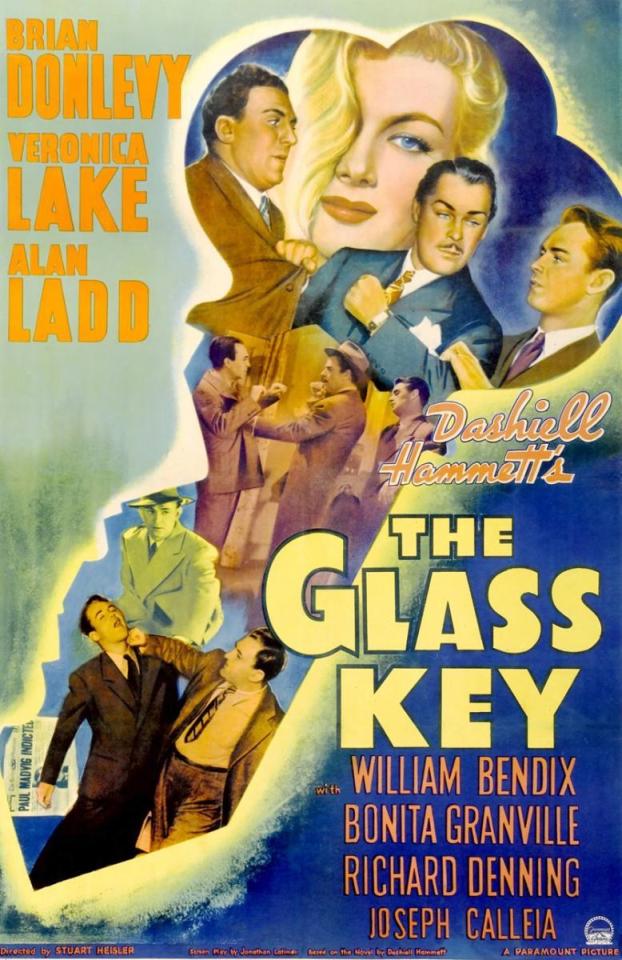
The Glass Key was screened in Toronto on 8 September 1942 before wider release in October.
Based on Dashiell Hammett’s 1931 novel (with a script by Jonathan Latimer), it was the 2nd film version of the novel (George Raft starred in the 1935 film), and the 2nd film of 1942 to star Alan Ladd and Veronica Lake (This Gun for Hire - also directed by Frank Tuttle - had been released in April).
The 29-year-old Ladd was the not the movie star he would become, and was given 3rd billing behind Lake and Brian Donlevy.
The 2 films would make Ladd “not merely a leading man” but someone who the studio constructed films around. Ladd was inducted into the US Army in January 1943 and served 10 months before being discharged due to problems and influenza. Despite his career being on hold, he was named the 15th most popular movie star of the year.
#the glass key#1942#1942 movies#dashiell hammett#jonathan latimer#veronica lake#brian donlevy#frank tuttle
19 notes
·
View notes
Text

John Lund, Gail Russell, and Edward G. Robinson in Night Has a Thousand Eyes (John Farrow, 1948)
Cast: Edward G. Robinson, Gail Russell, John Lund, Virginia Bruce, William Demarest, Richard Webb, Jerome Cowan, Onslow Stevens, Roman Bonhen, Luis Van Rooten, Henry Guttman, Mary Adams. Screenplay: Barré Lyndon, Jonathan Latimer, based on a novel by Cornell Woolrich. Cinematography: John F. Seitz. Art direction: Franz Bachelin, Hans Dreier. Film editing: Eda Warren. Music: Victor Young.
Night Has a Thousand Eyes is a supernatural whodunit that almost comes apart at several points, especially when the killer goes undetected in a houseful of cops by hiding behind a curtain. But it's held together by Edward G. Robinson's performance as a former vaudeville mind reader who discovered that he really did have the ability to see the future. Many plot turns later, he finds himself under suspicion by the police for trying to con an heiress by predicting her death, which he's really trying to prevent. Director John Farrow manages to maintain a noir atmosphere through a nonsensical story, though he's not helped much by the blandness of Gail Russell as the woman in jeopardy and John Lund as her rather thick boyfriend. William Demarest is better cast as the grouchy detective in charge of the case. It's the kind of movie that works best if you relax and don't try to make sense out of it.
1 note
·
View note
Photo

killercoversoftheweek
1936 Doubleday hardcover
1958 Pocket reissue
cover art by Robert Abbett
Seattle Mystery Bookshop
#jonathan latimer#pocket paperback#pulp art#pulp illustration#robert abbett#crime fiction#mystery novel#bill crane#private detective#hardboiled
10 notes
·
View notes
Text
(LATimes) Michael Hiltzik: The revival of network neutrality - Los Angeles Times

Federal Communications Commission Chair Jessica Rosenworcel shepherded a restoration of network neutrality at the FCC.
(Jonathan Newton / Pool)
In the midst of its battle to extinguish the Mendocino Complex wildfire in 2018, the Santa Clara County Fire Department discovered that its internet connection provider, Verizon, had throttled their data flow virtually down to zero, cutting off communications for firefighters in the field. One firefighter died in the blaze and four were injured.
Verizon refused to restore service until the fire department signed up for a new account that more than doubled its bill.
That episode has long been Exhibit A in favor of restoring the Federal Communications Commission’s authority to regulate broadband internet service, which the FCC abdicated in 2017, during the Trump administration.
This is an industry that requires a lot of scrutiny.
— Craig Aaron, Free Press, on the internet service industry
Now that era is over. On Thursday, the FCC — now operating with a Democratic majority — reclaimed its regulatory oversight of broadband via an order that passed on party lines, 3-2.
The commission’s action could scarcely be more timely.
“Four years ago,” FCC Chair Jessica Rosenworcel observed Thursday as the commission prepared to vote, “the pandemic changed life as we know it. ... Much of work, school and healthcare migrated to the internet. ... It became clear that no matter who you are or where you live, you need broadband to have a fair shot at digital age success. It went from ‘nice to have’ to ‘need to have.’ ”
Yet the commission in 2017 had thrown away its own ability to supervise this essential service. By categorizing broadband services as “information services,” it relinquished its right to address consumer complaints about crummy service, or even collect data on outages. It couldn’t prevent big internet service providers such as Comcast from favoring their own content or websites over competitors by degrading the rivals’ signals when they reached their subscribers’ homes.
“We fixed that today,” Rosenworcel said.
The issue the FCC addressed Thursday is most often viewed in the context of “network neutrality.” This core principle of the open internet means simply that internet service providers can’t discriminate among content providers trying to reach your home or business online — they can’t block websites or services, or degrade their signal, slow their traffic or, conversely, provide a better traffic lane for some rather than others.
The principle is important because their control of the information highways and byways gives ISPs tremendous power, especially if they control the last mile of access to end users, as do cable operators such as Comcast and telecommunications firms such as Verizon. If they use that power to favor their own content or content providers that pay them for a fast lane, it’s consumers who suffer.
Net neutrality has been a partisan football for more than two decades, or ever since high-speed broadband connections began to supplant dial-up modems.
In legal terms, the battle has been over the classification of broadband under the Communications Act of 1934 — as Title I “information services” or Title II “telecommunications.” The FCC has no jurisdiction over Title I services, but great authority over those classified by Title II as common carriers.
The key inflection point came in 2002, when a GOP-majority FCC under George W. Bush classified cable internet services as Title I. In effect, the commission stripped itself of its authority to regulate the nascent industry. (Then-FCC Chair Michael Powell subsequently became the chief Washington lobbyist for the cable industry, big surprise.)
Not until 2015 was the error rectified, at the urging of President Obama. Broadband was reclassified under Title II; then-FCC Chair Tom Wheeler was explicit about using the restored authority to enforce network neutrality.
But that regulatory regime lasted only until 2017, when a reconstituted FCC, chaired by a former Verizon executive Ajit Pai, reclassified broadband again as Title I in deference to President Trump’s deregulatory campaign. The big ISPs would have geared up to take advantage of the new regime, had not California and other states stepped into the void by enacting their own net neutrality laws.
A federal appeals court upheld California’s law, the most far-reaching of the state statutes, in 2022. And although the FCC’s action could theoretically preempt the state law, “what the FCC is doing is perfectly in line with what California did,” says Craig Aaron, co-CEO of the consumer advocacy organization Free Press.
The key distinction, Aaron told me, is that the FCC’s initiative goes well beyond the issue of net neutrality — it establishes a single federal standard for broadband and reclaims its authority over the technology more generally, in ways that “safeguard national security, advance public safety, protect consumers and facilitate broadband deployment,” in the commission’s own words.
Although Verizon’s actions in the 2018 wildfire case did not violate the net neutrality principle, for instance, the FCC’s restored regulatory authority might have enabled it to set forth rules governing the provision of services when public safety is at stake that might have prevented Verizon from throttling the Santa Clara Fire Department’s connection in the first place.
Until Thursday, the state laws functioned as bulwarks against net neutrality abuses by ISPs. “California helped discourage companies from trying things,” Aaron says. Indeed, provisions of the California law are explicit enough that state regulators haven’t had to bring a single enforcement case. “It’s been mostly prophylactic,” he says — “telling the industry what it can and can’t do. But it’s important to have set down the rules of the road.”
None of this means that the partisan battle over broadband regulation is over. Both Republican FCC commissioners voted against the initiative Thursday. A recrudescence of Trumpism after the November election could bring a deregulation-minded GOP majority back into power at the FCC.
Indeed, in a lengthy dissenting statement, Brendan Carr, one of the commission’s Republican members, repeated all the conventional conservative arguments presented to justify the repeal of network neutrality in 2017. Carr painted the 2015 restoration of net neutrality as a liberal plot — “a matter of civic religion for activists on the left.”
He asserted that the FCC was then goaded into action by President Obama, who was outspoken on the need for reclassification and browbeat Wheeler into going along. Leftists, he said, “demand that the FCC go full-Title II whenever a Democrat is president.”
Carr also depicted network neutrality as a drag on profits and innovation in the broadband sector. “Broadband investment slowed down after the FCC imposed Title II in 2015,” he said, “and it picked up again after we restored Title 1 in 2017.”
Carr chose his time frame very carefully. Examine the longer period in which net neutrality has been debated at the FCC, and one finds that broadband investment crashed after a Republican-led FCC reclassified broadband as an information service in 2002, falling to $57 billion in 2003 from $111.5 billion in 2001.
Investment did decline between 2015, when net neutrality rules were reinstated, and 2017, when they were rescinded — by a minuscule 0.8%. It hasn’t been especially robust since then — as of 2002 it was still running at only about 92% of what it had been two decades earlier.
As the FCC observed in Thursday’s order, “regulation is but one of several factors that drive investment and innovation in the telecommunications and digital media markets.”
The commission cited consumer demand and the arrival of new technologies, among others. Strong, consistent regulation, moreover, opens the path for new competitors with new ideas and innovations — and can bring prices down for users in the process.
The truth is that network neutrality has been heavily favored by the public, in part because examples of ISPs abusing their power were not hard to find. In 2007, Comcast was caught degrading traffic from the file-sharing service BitTorrent, which held contracts to distribute licensed content from Hollywood studios and other sources in direct competition with Comcast’s pay-TV business.
In 2010, Santa Monica-based Tennis Channel complained to the FCC that Comcast kept it isolated on a little-watched sports tier while giving much better placement to the Golf Channel and Versus, two channels that compete with it for advertising, and which Comcast happened to own. The FCC sided with the Tennis Channel but was overruled by federal court.
Even barring a change at the White House, the need for vigilant enforcement will never go away; ISPs will always be looking for business models and manipulative practices that could challenge the FCC’s oversight capabilities, especially as cable and telecommunications companies consolidate into bigger and richer enterprises and combine content providers with their internet delivery services.
“This is an industry,” Aaron says, “that requires a lot of scrutiny.”
#long post#refrigerator magnet#michael hiltzik#net neutrality#internet#utility#fcc#better than four years ago#politics#republicans#internet is a utility
2 notes
·
View notes